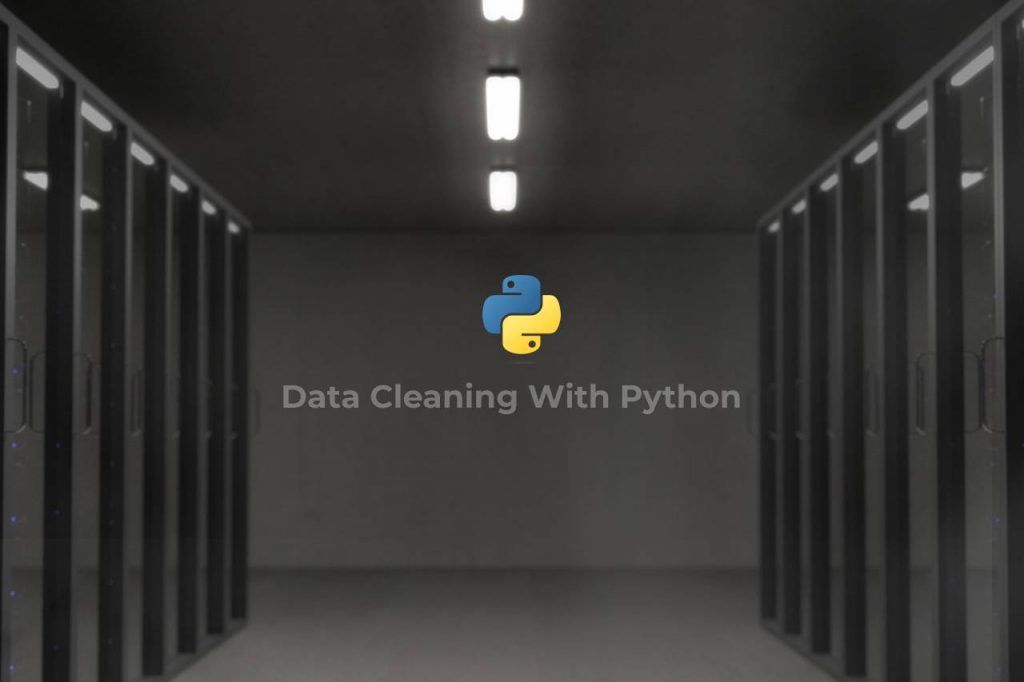A Complete Guide to Data Cleaning With Python
Data cleaning is the process of identifying and correcting errors, inconsistencies, and missing values in a dataset. It is an essential step in the data preprocessing process and is vital because dirty data can lead to incorrect conclusions or flawed analyses.
Data cleaning involves several tasks, such as identifying and correcting errors in the data, handling missing values, outliers, and inconsistent data, and converting data types as needed. These tasks are usually performed using a combination of manual inspection and automated methods.
Data cleaning is a time-consuming process, but it is essential for ensuring the quality and reliability of the data. It is an important step in the data science workflow because it helps to ensure that the data is ready for analysis and modeling.
Data Cleaning With Python
Data cleaning is essential in the data science process because it ensures that the data you are working with is accurate, consistent, and usable. Data cleaning can involve various tasks, such as fixing incorrect or missing values, removing duplicates, and standardizing data. In this guide, we will cover some standard data-cleaning techniques using Python.
You’re reading A Complete Guide to Data Cleaning With Python.
Importing and inspecting the data
Before you start cleaning your data, you should import it into your Python script and look at it. Depending on the format of your data, you can use a variety of libraries to read it into a Pandas DataFrame. For example, you can use pandas.read_csv() to read in a CSV file, or pandas.read_excel() to read in an Excel file.
Once you have your data in a DataFrame, you can use the head() and info() methods to inspect it. The head() method displays the first few rows of the DataFrame while info() displaying information about the data types and null values in the DataFrame.
import pandas as pd
# Read in the data
df = pd.read_csv("data.csv")
# Inspect the data
print(df.head())
print(df.info())You’re reading A Complete Guide to Data Cleaning With Python.
Handling missing values
One common issue you may encounter when working with real-world data is missing values. These can occur when a value is not recorded or when a value is recorded as “NA” or some other placeholder.
To handle missing values, you have a few options. One option is to simply drop rows with missing values using the dropna() method. This is a quick and easy way to eliminate missing values, but it can also result in a significant data loss if many rows have missing values.
You’re reading A Complete Guide to Data Cleaning With Python.
Another option is to impute missing values using a strategy such as mean imputation, where you replace the missing value with the mean of the non-missing values for that column. You can do this using the fillna() method and passing in the appropriate value or a function to compute the value.
Drop rows with missing values
df.dropna(inplace=True)
Impute missing values with the mean
df.fillna(df.mean(), inplace=True)
You’re reading A Complete Guide to Data Cleaning With Python.
Removing duplicates
Duplicate data can occur for various reasons, such as errors in data entry or multiple sources of data being combined. To remove duplicates from your data, you can use the drop_duplicates() method.
By default, this method will keep the first occurrence of a duplicate row and remove all subsequent occurrences. You can also specify which columns to consider when checking for duplicates.
Remove duplicates
df.drop_duplicates(inplace=True)
Remove duplicates based on specific columns
df.drop_duplicates(subset=[“column1”, “column2”], inplace=True)
Handling incorrect data types
Use the df.astype() function to convert data types.
Handling outliers
Use the df.clip() function to clip values that fall outside of a specified range.
You’re reading A Complete Guide to Data Cleaning With Python.
Standardizing data
Standardizing data is the process of transforming data so that it has a common scale and format. This can be useful if you are working with data from multiple sources with different scales or formats.
Use string manipulation functions such as df.str.lower() and df.str.strip() to standardize data.
Hope you liked reading the article, A complete guide to Data Cleaning With Python. Please share your thoughts in the comments section below.

